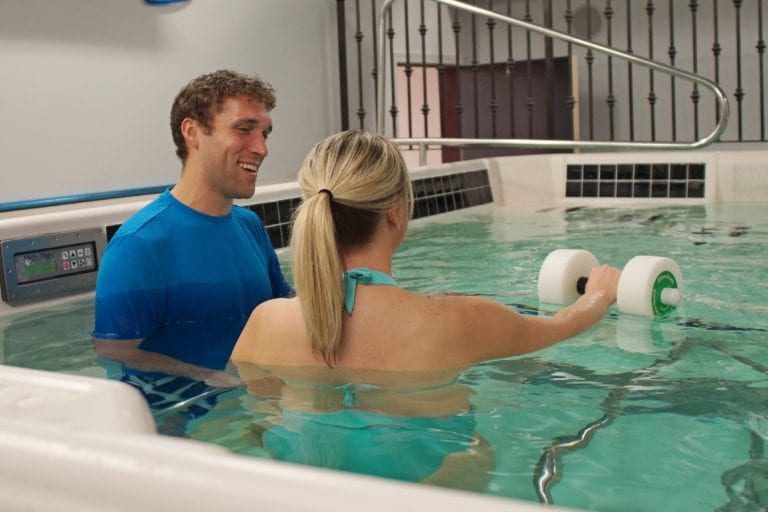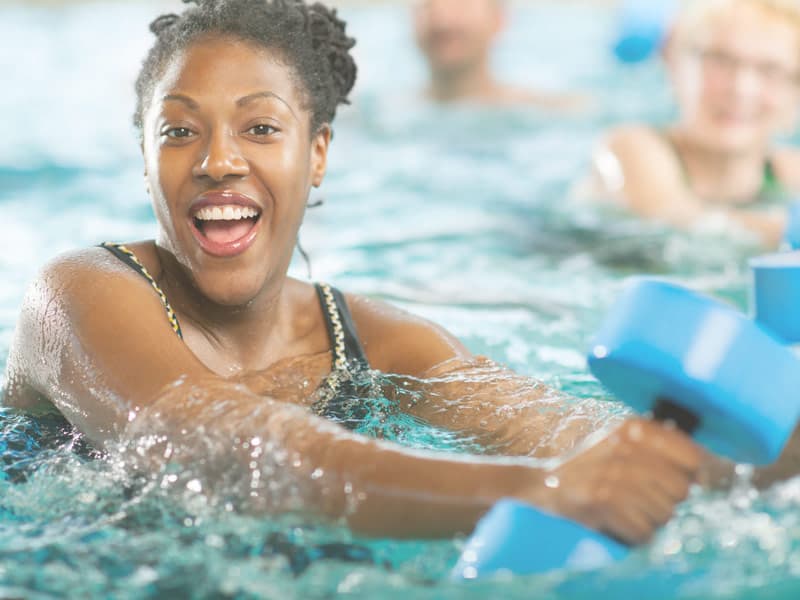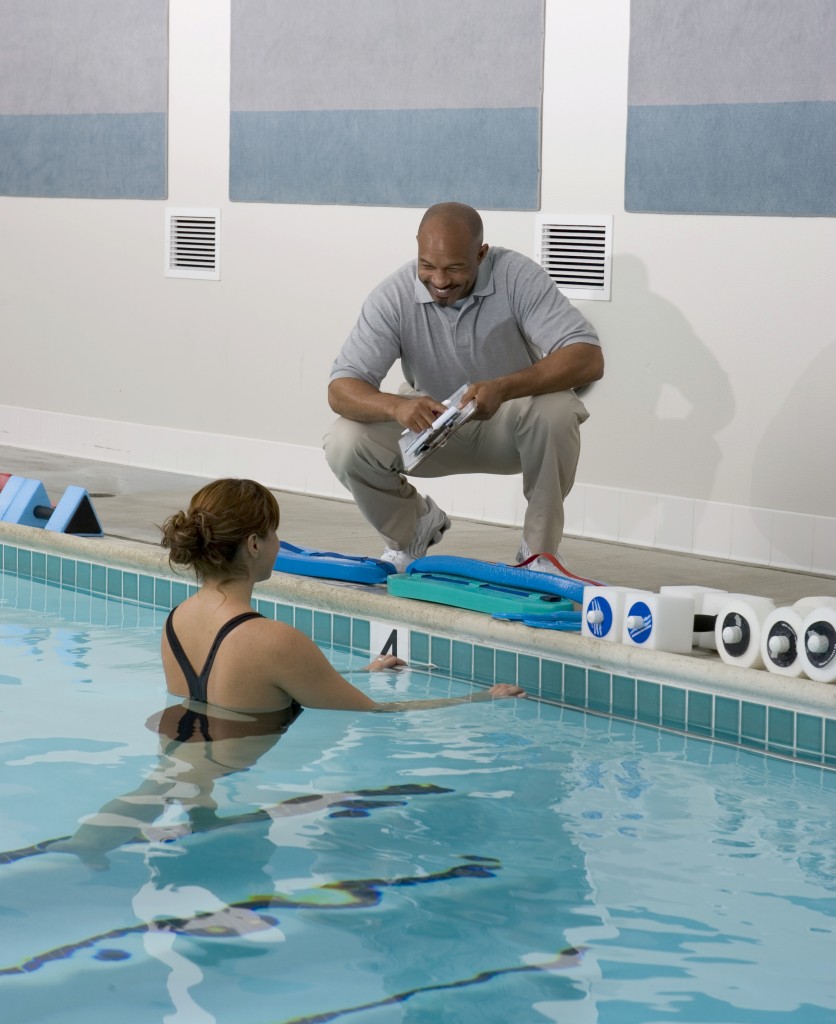What is Aquatic Therapy and How Does it Aid Athlete Recovery?
Aquatic therapy, also known as water therapy, is a specialized form of physical rehabilitation that utilizes the unique properties of water to facilitate healing, enhance mobility, and improve overall well-being for athletes in recovery. The buoyancy of water reduces the effects of gravity, enabling easier movement and less stress on joints, while the resistance offered by water helps build strength and improve balance.
Aquatic therapy for athlete recovery is a versatile and customizable approach that caters to athletes of all ages and abilities. It is particularly beneficial for those recovering from injuries, surgeries, or dealing with chronic pain and inflammation. By harnessing the therapeutic potential of water, athletes can experience reduced muscle soreness, enhanced flexibility, and improved cardiovascular fitness, ultimately leading to a faster and more effective recovery process.

Hydrotherapy vs. Aquatic Therapy: Key Differences and Similarities
Hydrotherapy and aquatic therapy are often used interchangeably, but they have distinct differences and similarities. Both forms of therapy utilize water for healing and rehabilitation purposes, but aquatic therapy is a specialized field that requires specific training and certification for practitioners. Hydrotherapy, on the other hand, is a more general term that encompasses various water-based treatments, including aquatic therapy.
The primary similarity between hydrotherapy and aquatic therapy lies in their shared benefits. Both forms of therapy can help reduce pain, inflammation, and muscle soreness, improve circulation, and promote relaxation. They also offer a low-impact environment for exercise, making them suitable for individuals recovering from injuries or surgeries.
However, aquatic therapy offers unique advantages for athletes in recovery. Its specialized techniques, such as Ai Chi, Watsu, and Halliwick, are designed to target specific areas of concern for athletes, including strength, balance, and range of motion. These techniques often involve guided movements, stretches, and resistance exercises that are tailored to the individual’s needs and abilities. Furthermore, aquatic therapy sessions are typically supervised by trained professionals, ensuring that athletes receive personalized care and guidance throughout their recovery process.
Top Aquatic Therapy Techniques for Athletes
Aquatic therapy offers a variety of techniques that can help athletes in their recovery process. These methods leverage water’s unique properties, such as buoyancy and resistance, to improve strength, balance, and range of motion. Here are some of the most popular aquatic therapy techniques for athletes:
Ai Chi
Ai Chi is a water-based exercise that combines elements of t’ai chi and shiatsu. It involves slow, controlled movements that promote relaxation, balance, and core stability. Ai Chi can help athletes improve their posture, focus, and mental well-being, making it an excellent addition to any recovery routine.
Watsu
Watsu is a form of aquatic bodywork that combines elements of Zen shiatsu and water therapy. During a Watsu session, a trained practitioner gently manipulates the athlete’s body while they float in warm water. This technique can help reduce muscle tension, improve joint mobility, and promote deep relaxation. Watsu is particularly beneficial for athletes recovering from injuries or surgeries, as it allows for gentle, low-impact movement.
Halliwick
Halliwick is a concept of aquatic therapy that focuses on balance, coordination, and body awareness. It involves a series of exercises and movements designed to help individuals with disabilities or injuries improve their mobility and confidence in the water. For athletes, Halliwick can help enhance balance, coordination, and proprioception, which are crucial for optimal performance and injury prevention.
Aquatic Pilates and Yoga
Aquatic Pilates and Yoga are adapted versions of their land-based counterparts, incorporating water’s unique properties to provide a challenging yet low-impact workout. These techniques can help athletes improve their core strength, flexibility, and balance, while also promoting relaxation and mental well-being.
Flotation Therapy
Flotation therapy involves floating in a sensory deprivation tank filled with warm water and Epsom salts. This technique can help athletes reduce stress, improve sleep quality, and alleviate muscle tension. By eliminating external stimuli, flotation therapy allows athletes to achieve a deep state of relaxation and mental clarity.

How to Incorporate Aquatic Therapy into Your Recovery Routine
Integrating aquatic therapy into an athlete’s recovery routine can be a straightforward process when approached systematically. Factors such as frequency, duration, intensity, and professional supervision play crucial roles in optimizing the benefits of aquatic therapy for athlete recovery. Here’s a practical guide to help athletes get started:
Frequency
To maximize the benefits of aquatic therapy for athlete recovery, it is recommended to participate in water-based exercises at least two to three times per week. This frequency allows the body adequate time to recover and adapt to the low-impact, resistance-based training, promoting overall well-being and improved performance.
Duration
Each aquatic therapy session should last between 30 to 60 minutes, depending on the athlete’s individual needs and goals. This timeframe ensures that athletes have enough time to perform various exercises and techniques, while also allowing for adequate rest and recovery between sets.
Intensity
Aquatic therapy for athlete recovery should be tailored to the individual’s specific needs and abilities. The intensity of the exercises should be challenging yet manageable, promoting muscle engagement and adaptation without causing undue strain or discomfort. Adjusting the water depth, temperature, and resistance can help customize the intensity of each session.
Professional Supervision
Working with a qualified aquatic therapist or healthcare professional is essential for ensuring the safe and effective implementation of aquatic therapy for athlete recovery. These experts can help design personalized exercise programs, provide real-time feedback, and monitor progress, ensuring that athletes maximize the benefits of this innovative recovery method.
By considering these factors and working closely with aquatic therapy professionals, athletes can successfully incorporate water-based exercises into their recovery routines, promoting enhanced strength, balance, and overall well-being.

Real-Life Success Stories: Athletes Who Swear by Aquatic Therapy
Aquatic therapy for athlete recovery has gained significant traction in recent years, with numerous high-performing athletes incorporating it into their training and rehabilitation regimens. The following inspiring success stories demonstrate the transformative potential of aquatic therapy for athletes seeking to enhance their performance and overall well-being:
Swimmer’s Redemption: Overcoming Shoulder Injury
A professional swimmer, once a promising medal contender, faced a severe shoulder injury that threatened to end her career. After months of unsuccessful land-based physical therapy, she turned to aquatic therapy for athlete recovery. The reduced gravity and gentle resistance of the water allowed her to regain her strength and mobility, ultimately returning to competitive swimming and achieving her dream of winning an Olympic medal.
Marathon Runner’s Second Wind: Balance and Stability
A seasoned marathon runner struggled with balance and stability issues, affecting his performance and increasing the risk of injury. Through aquatic therapy sessions focused on core strengthening and proprioception exercises, he significantly improved his balance and stability, shaving valuable minutes off his personal best and competing at a higher level than ever before.
Basketball Star’s ACL Recovery: Rapid Return to Play
An elite basketball player suffered a season-ending ACL injury, but through a rigorous aquatic therapy program, he managed to recover faster than anticipated. The water’s buoyancy and resistance enabled him to maintain his fitness levels and regain his strength and agility, allowing him to return to the court in record time and lead his team to victory in the championship game.
These success stories, among many others, highlight the transformative potential of aquatic therapy for athlete recovery. By incorporating water-based exercises and techniques into their training and rehabilitation routines, athletes can overcome injuries, enhance their performance, and improve their overall well-being.

Choosing the Right Aquatic Therapy Facility for Athlete Recovery
When selecting an aquatic therapy facility to support athlete recovery, several essential factors must be taken into consideration. By prioritizing these aspects, athletes can ensure they receive high-quality care and maximize the benefits of aquatic therapy for their health and performance.
First and foremost, it is crucial to verify that the facility employs qualified staff members with extensive experience in aquatic therapy for athlete recovery. These professionals should hold relevant certifications, such as aquatic therapy or athletic training credentials, and have a proven track record of working with athletes. A competent staff will be able to tailor aquatic therapy programs to each athlete’s unique needs, ensuring optimal results and minimizing the risk of injury.
Another critical factor is the quality of equipment available at the facility. High-quality pools, with appropriate temperature control and adjustable depth features, are essential for effective aquatic therapy sessions. Additionally, the facility should provide various aquatic therapy tools, such as flotation devices, resistance equipment, and underwater treadmills, to ensure a well-rounded and customizable recovery experience.
Client testimonials and reviews can also provide valuable insights into a facility’s reputation and the quality of care it offers. Positive feedback from other athletes who have undergone aquatic therapy for athlete recovery at the facility can instill confidence in your choice. Conversely, negative reviews or a lack of testimonials may indicate the need to explore alternative options.
Lastly, consider the convenience and accessibility of the facility. Location, hours of operation, and available parking can all impact the overall experience. Choosing a conveniently located and easily accessible facility can help ensure consistent attendance and a smooth recovery process.
By carefully evaluating these factors, athletes can make informed decisions when selecting an aquatic therapy facility for their recovery needs. Investing time and effort into finding the right facility will ultimately contribute to a more successful and enjoyable recovery experience.
Maximizing the Benefits of Aquatic Therapy: Complementary Practices and Techniques
Aquatic therapy for athlete recovery is a powerful and versatile approach to enhancing performance and overall well-being. By combining aquatic therapy with complementary practices and techniques, athletes can further maximize its benefits and optimize their recovery process.
Massage therapy is an excellent complement to aquatic therapy for athlete recovery. Massage helps alleviate muscle tension, improve circulation, and promote relaxation. By incorporating massage therapy sessions before or after aquatic therapy sessions, athletes can experience enhanced muscle recovery, reduced soreness, and improved flexibility.
Stretching is another essential complementary practice for athletes undergoing aquatic therapy. Stretching exercises, when performed in conjunction with aquatic therapy, can help improve range of motion, reduce muscle stiffness, and prevent injuries. Implementing a consistent stretching routine before and after aquatic therapy sessions can contribute to a more effective and comprehensive recovery experience.
Nutrition plays a critical role in the recovery process for athletes. Consuming a balanced diet rich in protein, healthy fats, and complex carbohydrates can support muscle repair, reduce inflammation, and enhance overall well-being. By combining a nutritious diet with aquatic therapy for athlete recovery, athletes can experience accelerated healing, improved energy levels, and better performance.
Additionally, incorporating mindfulness practices, such as meditation and deep breathing exercises, can further enhance the benefits of aquatic therapy for athlete recovery. Mindfulness techniques help reduce stress, improve focus, and promote mental well-being. By integrating mindfulness practices into their aquatic therapy routine, athletes can experience a more holistic and balanced recovery process.
In conclusion, aquatic therapy for athlete recovery is a powerful tool for enhancing performance and overall well-being. By combining aquatic therapy with complementary practices and techniques, such as massage, stretching, nutrition, and mindfulness, athletes can maximize its benefits and optimize their recovery process.

Navigating Insurance and Cost Considerations for Aquatic Therapy
Aquatic therapy for athlete recovery offers numerous benefits, including reduced muscle soreness, enhanced flexibility, and improved overall well-being. However, athletes may have concerns about the cost and insurance coverage of aquatic therapy. By understanding their options and taking a proactive approach, athletes can maximize their coverage and explore affordable alternatives.
Insurance coverage for aquatic therapy varies depending on the provider and the specific policy. In many cases, aquatic therapy is considered a form of physical therapy and may be covered under the same provisions. Athletes should consult their insurance providers to determine their coverage levels and any restrictions or requirements.
To maximize insurance coverage for aquatic therapy, athletes should follow these tips:
- Obtain a referral from a healthcare provider, if necessary, to ensure coverage.
- Choose an in-network provider to minimize out-of-pocket costs.
- Keep detailed records of all therapy sessions, including dates, durations, and outcomes, to support insurance claims.
- Communicate openly with insurance providers and healthcare professionals to ensure all necessary documentation is provided.
For athletes without insurance coverage or with limited coverage, alternative options may be available. Some facilities offer sliding scale fees or financial assistance programs based on income. Additionally, athletes can explore healthcare sharing ministries, which are organizations that pool resources to cover medical expenses for their members.
In summary, aquatic therapy for athlete recovery is a valuable tool for enhancing performance and overall well-being. By understanding insurance coverage and exploring affordable options, athletes can access the benefits of aquatic therapy without undue financial strain.

